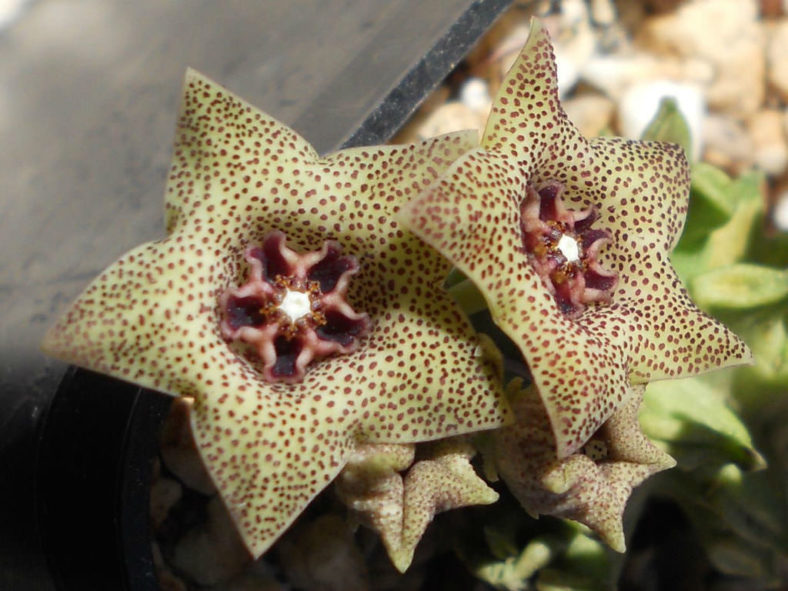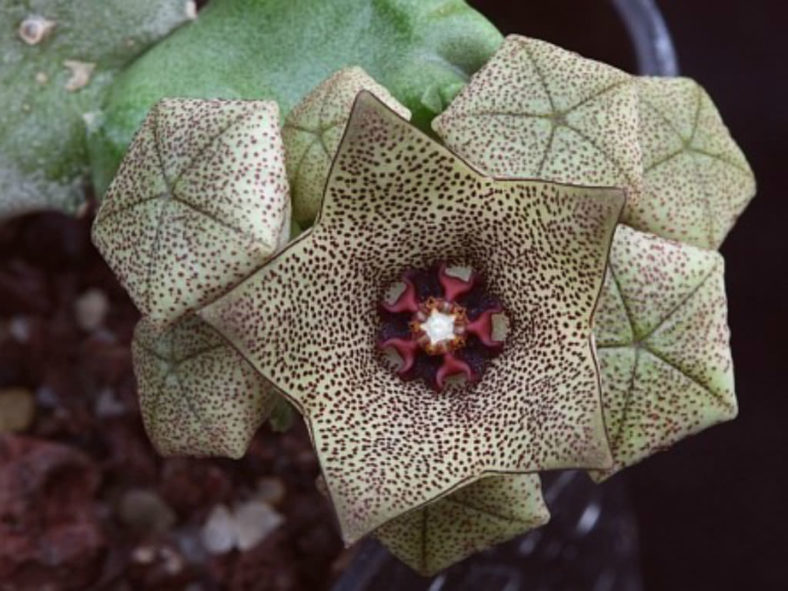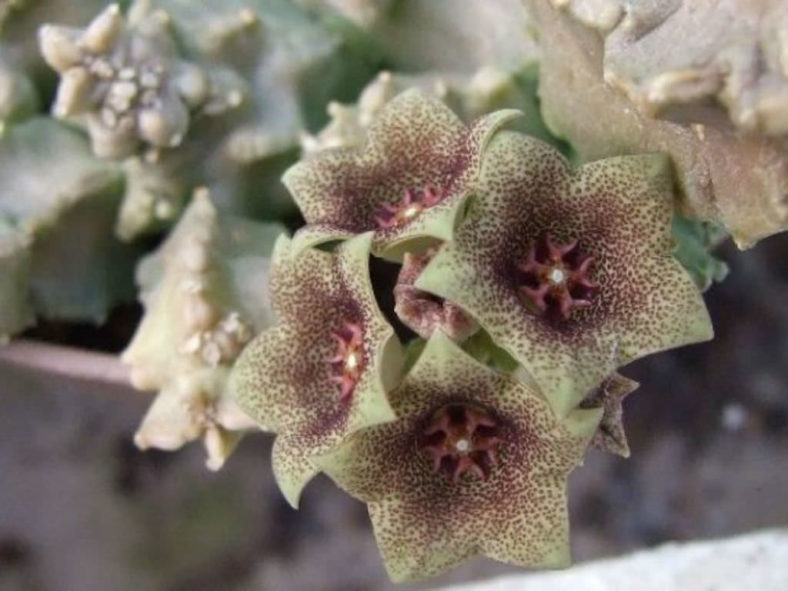Scientific Name
Monolluma hexagona (Lavranos) Meve & Liede
Synonym(s)
Caralluma hexagona, Ceropegia hexagona, Sulcolluma hexagona
Scientific Classification
Family: Apocynaceae
Subfamily: Asclepiadoideae
Tribe: Ceropegieae
Subtribe: Stapeliinae
Genus: Monolluma
Etymology
The specific epithet "hexagona" (pronounced "hek-sa-GON-uh") means "hexagonal" and refers to the stems of this species that have a hexagonal cross-section.
Origin
Monolluma hexagona is native to Saudi Arabia, Yemen, and Oman. It grows in shallow soil overlaying rock outcrops and crevices.
Description
Monolluma hexagona, formerly known as Caralluma hexagona, is a small, highly branched succulent with fleshy, green to gray-green stems with usually 4 to 6 wavy, toothed ribs. It can grow up to 8 inches (20 cm) tall and branch from the base, forming dense clumps over time. The stems are upright or ascending, branched, and can measure up to 3.2 inches (8 cm) in length and 0.8 inches (2 cm) in diameter.
The flowers are erect, star-shaped to slightly bell-shaped, and can reach a diameter of up to 0.9 inches (2.2 cm). They are greenish-white or cream-colored, densely spotted with reddish-brown, and appear in clusters of 5 to 20 on short stalks in late summer and fall.

How to Grow and Care for Monolluma hexagona
Hardiness: USDA hardiness zone 10a to 11b: from 30°F (-1.1°C) to 50°F (10°C).
Stapeliads are relatively easy to grow. They should be treated as outdoor plants as they will easily rot indoors and cannot flower without exposure to outdoor temperature fluctuations. They should be grown under cover so that watering can be controlled. They require a reasonable amount of sunlight to promote flowering and maintain a well-shaped plant. Very shady positions will produce very poor flowering. Stapeliads come from climates where they survive extremely high temperatures in the summer months, so most growth is in spring and autumn, with flowering in autumn when the weather starts to cool down.
The easiest and most effective way to propagate Stapeliads is by taking stem cuttings virtually throughout the year. Using seeds is also a method of propagation.
They all need extra good drainage. Stapeliads are shallow-rooted. A collection of them can be planted nicely in a wide, shallow bowl. When planting, it is a good idea to allow the roots to be buried in soil and then put pure gravel or sand around the base of the plant to prevent rot.
See more at How to Grow and Care for Stapeliads.
Links
- Back to genus Monolluma
- Succupedia: Browse succulents by Scientific Name, Common Name, Genus, Family, USDA Hardiness Zone, Origin, or cacti by Genus
Photo Gallery
Click on a photo to see a larger version.

